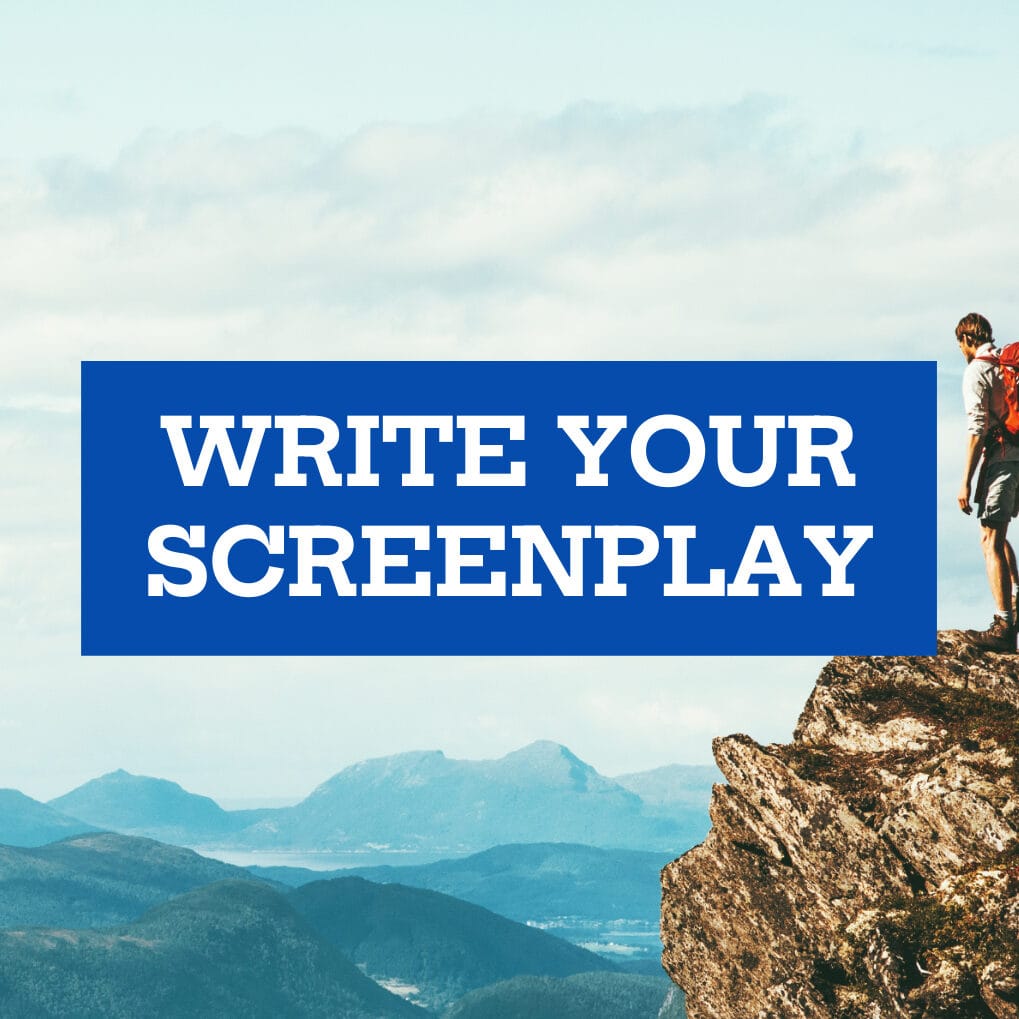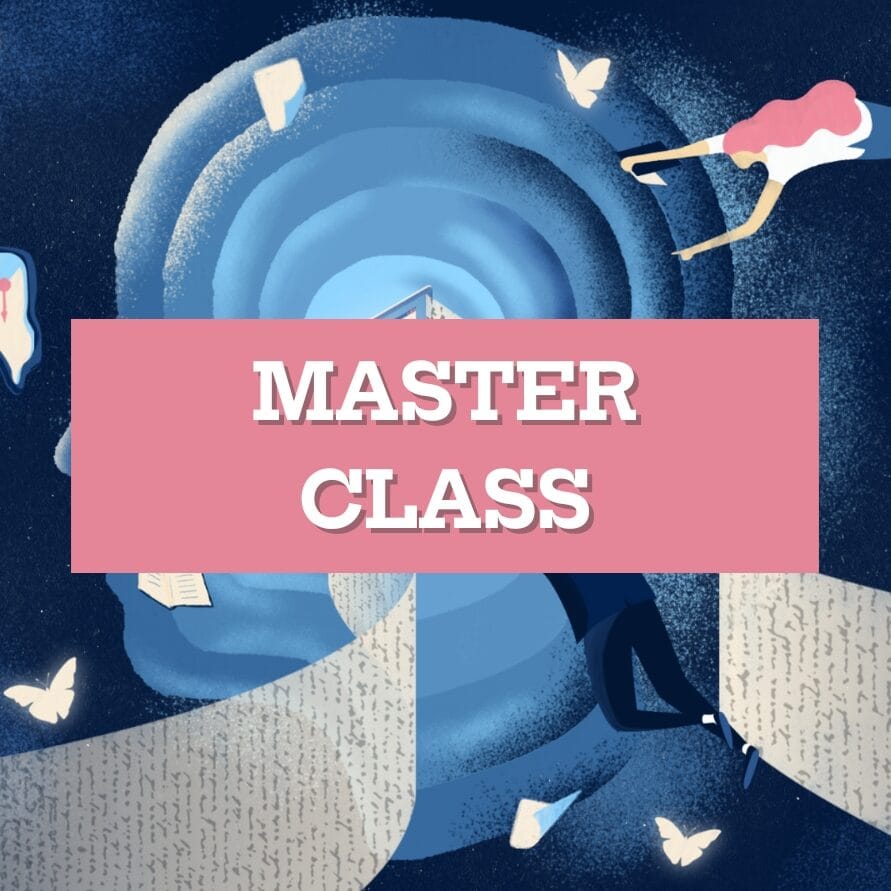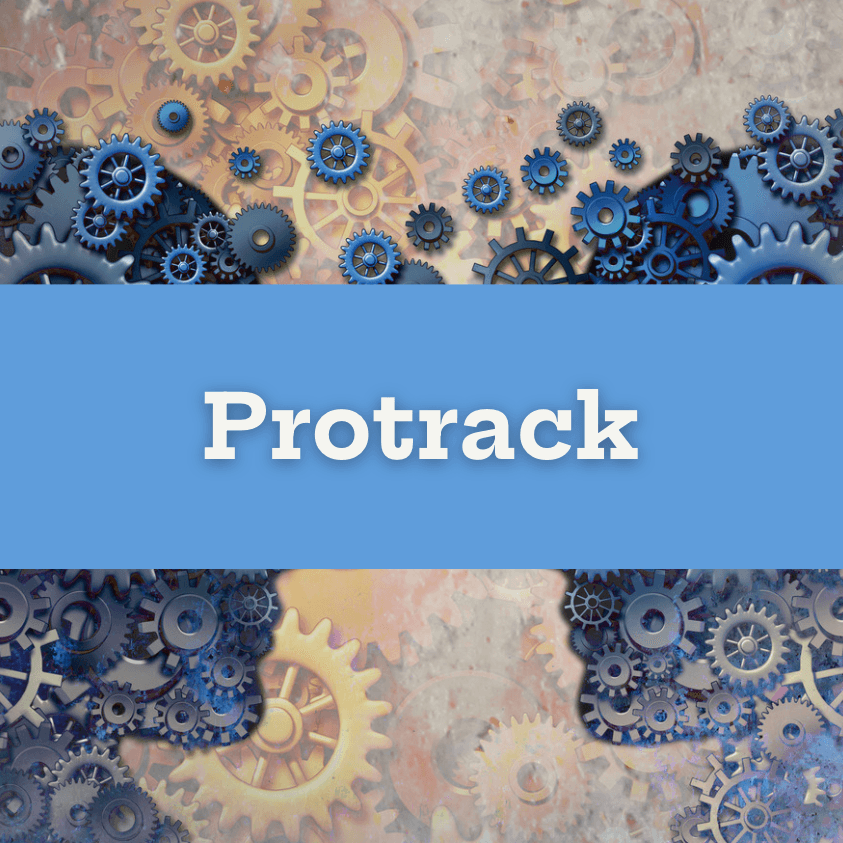Jacob Krueger Studio faculty member Christian Lybrook and I attended Sundance 2024 together, leading to this new series of short videos about the films we saw there, and what screenwriters could learn from them. These videos were first released on our social media during the festival (follow @thejkstudio for future updates). The response was so strong, and the lessons so valuable that we’ve compiled them into a two part podcast series, built around common themes.
Whether you’ve seen these films or not, there are so many lessons you can benefit from through these discussions, including how to lean into the emotional logic of your structure, how to control tone, how to surprise genre expectations, how to get the most out of your first image, how to build central metaphors and image systems, how to build mirrors for your main characters, how to write movies about profound socio-political issues, how to build structure through emotional needs and much more…
In this episode, we’ll be looking at feature films Your Monster, Layla, A Different Man, and Reinas, as well as Sundance’s Grand Jury Prize winning documentary Porcelain War.
And for those of you listening rather than viewing… if you notice the sound is a little different in each of these podcasts, it’s because we’re trying to bring the Sundance Experience to you at home, by recording in lots of different locations– from the beloved Egyptian Theatre on main street to the Gondola at the Park City Mountain.
The first film we’re going to be discussing is Your Monster, a sweet little Beauty and the Beast inspired– well let’s call it a “Romantic Comedy”– with some other slightly less expected genre elements that we’re not going to give away. This is a film that moved, inspired, surprised and delighted us. And there’s so much you can learn from it as a screenwriter about leaning into the emotional (rather than the rational) logic of your screenplay, navigating toward the fun, establishing the tone of your screenplay, and squeezing out all the juice from a mash of different genre elements. It’s not yet in theatres, so we’re only going to talk about the opening sequence up to the inciting incident, so there will be minimal spoilers.
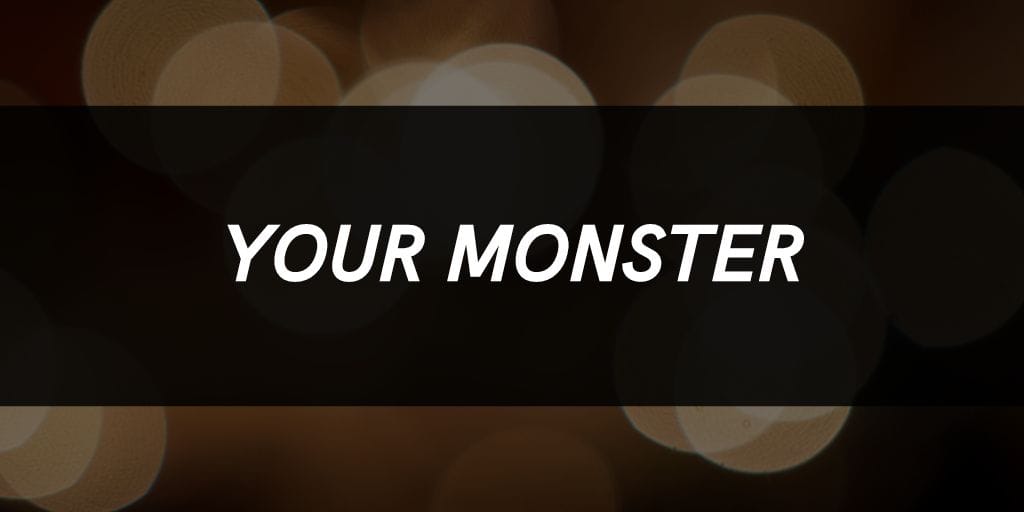
Your Monster written and directed by Caroline Lindy
Jacob Krueger: Your Monster by Caroline Lindy is a relationship story about a girl and the monster who lives in her closet. One of the things that’s really beautiful about this movie is it’s not just about her love story with a monster, it’s really about a love story with herself.
Christian Lybrook: It’s a “Beauty and the Beast” story. Caroline Lindy takes a story that we’re all familiar with and she starts to spin it, looking at it from all different angles: You think it’s going to go this way? I’m going to give you something else. And that’s a great exercise for us to do as screenwriters.
Your Monster shows screenwriters the value of leaning into the emotional logic of the story, and navigating toward the fun, rather than getting caught up in the details.
Jacob Krueger: The film primarily leans into the emotional logic of the relationship between the main character, Laura, and the monster in her closet, rather than getting caught up in the “logical logic.” It’s magical realism. There are a lot of elements in the film where, if you get into your logical brain, you could say, Well, hold on a second, how did she get into the theater? How did she get into the audition? How did these things happen?
And yet, as you’re watching the film, you don’t care at all.
Christian Lybrook: My analytical brain, it’s loud in my head. And those moments, they did pop up. But the emotional storyline is so powerful that it just sort of dissipated. And this is such a great lesson when you have to make that choice of emotion versus logic. Nine times out of ten emotion is going to trump logic.
Jacob Krueger: Yes. And then you figure out how to make it believable within that. You’re not asking the audience to take leaps of faith they can’t take, but you are asking them to navigate towards the fun. They want you to navigate towards the fun.
Your Monster also demonstrates some valuable lessons for screenwriters about how to set the tone of your screenplay.
Jacob Krueger: At the very beginning of the piece, we meet Laura, a 20-something actor. She has cancer and her “artistic soulmate” boyfriend abandons her. So this is, on the surface, a very dark setup. But Your Monster is a comedy, a romantic comedy (with a little bit of a genre twist… which I won’t give away in this podcast). You’re watching this very dramatic stuff, but Caroline Lindy blows up the drama of the horrible cancer stuff by playing it against this really goofy soundtrack.
What she’s showing you, by juxtaposing these tones from the very beginning, is that Your Monster is going to be about real stuff, and it’s going to move you, don’t worry, you’re going to laugh.
There’s a great lesson there for screenwriters about setting the tone of your movie. When you think about the early pages of your script, if you start off in a different tone than where your movie’s going, there’s a good chance that the person who really wants your movie is going to stop reading, because they’re going to think it’s a different kind of movie.
It’s such a brilliant choice in Your Monster to bang the two tones of this movie up against each other from the very beginning, in order to set our expectations, and then surprise them.
Your Monster also contains some wonderful lessons about how to introduce characters in a screenplay.
Jacob Krueger: We’re following Laura. Her boyfriend leaves her. She comes home, and she has this “wonderful” best friend who’s picked her up from the hospital, since she has no one else. And her best friend says, “We are BFFs forever, ride or die, I’m gonna be with you 24/7.” And then, bang. “Oh, I gotta go, I have an audition.”
This is such a wonderful introduction. We immediately know not only who the main character is, but now we immediately know who her best friend is.
And beyond that, we know Laura’s problem. She has trouble standing up for herself, she gets pushed around, and she has no one she can depend on.
In the same way Your Monster surprises our expectations about character and tone, it also surprises our expectations about genre.
Jacob Krueger: You know, if you’ve read the title and even the briefest logline, that Laura’s going to meet the monster in her closet. And so we’re waiting for this moment, and we’re playing with all the wonderful genre elements that are building us there. And then she finally goes into the closet, and we’re waiting for the horror moment.
And what happens instead?
Christian Lybrook: We expect a horror moment, and instead it’s comedy. It’s deadpan comedy.
Jacob Krueger: The first thing the monster says is, “What’s up?”
So you get a huge laugh from the audience waiting for the jump scare because we got exactly the opposite. And then what’s wonderful about the film is that it builds to a place that actually brings all these genre elements to a culmination.
A question I often ask in these podcasts and in my classes is, How do you squeeze the most juice out of the orange? When we start this movie, it feels like, Oh, it’s these weird juxtapositions of tone. But actually, by the time she is done, Caroline Lindy is going to squeeze the juice out of each one of those genre elements even further than you could have imagined when you first sat down to watch the film.
The next film we’re going to be talking about is Layla, by Amrou Al-Kadhi. On its surface this film couldn’t be more different from Your Monster. It lives in the world of Naturalism, rather than Magical Realism, and strongly within one genre. However, like Your Monster, Layla starts with a compelling first image that sets the tone of the piece and establishes the problem of the main character. This film is a great lesson in how to reveal character, how to establish and build upon image systems in your writing, and how to think of characters in your cast as mirrors and reflections of your main character.
In order to fully explain these concepts in a way that would be valuable to writers who had not seen the film, we did need to spoil some of the plot of Layla, so if you’re concerned about that, you can pop ahead to the next movie in our discussion, A Different Man.
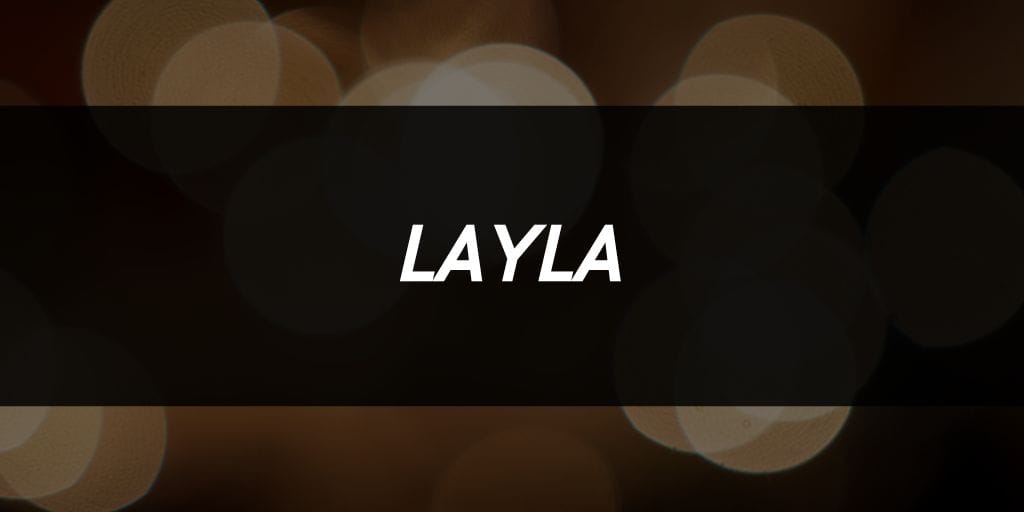
Layla, written and directed by Amrou Al-Kadhi
Jacob Krueger: Layla, by Amrou Al-Kadhi, is about a drag queen in London from Islamic roots. We’re going to start by talking about the first image of the film, and the way it sets an image system for the film that tells us so much about who Layla is, and what their journey will be over the course of the film.
Layla starts with a powerful first image that does so much to set the world of the movie and the internal problem of its main character.
In the first image of Layla, the main character, Layla, is making themselves up backstage. They get up to look at themselves in the mirror, but the mirror is a checkerboard, obscuring portions of Layla’s reflection. It’s a visual representation of Layla’s challenge of code-switching through the various roles they have to play in their lives: there are only portions of their personality that actually come through.
That image system gets built upon a few moments later. Layla’s about to get in the bath, and behind the bathtub, there’s another obscuring mirror.
These mirrors establish the visual system of the piece– directorial choices that visually establish Layla’s internal problem, and the journey that they’re about to go on in relation to that problem.
Writers and directors think about image systems in different ways. For directors, every aspect of the movie is a part of an image system. Whereas writers need to find the “greatest hits” images that do the most to reveal character.
Christian Lybrook: if you’re a screenwriter and you’re thinking about making directorial choices, those choices can’t be about, Oh, this will be a wide shot, this will be a close-up– unless it’s tied to story and how you reveal character.
Amrou Al-Kadhi uses mirrors as a device to reveal the main character of Layla in different ways all throughout the movie, exploring what we reveal, and fail to reveal as we interact with one another.
Every interaction, and every image, is an opportunity to reveal character. And revealing character is not just about what the character says.
Just like in our own lives, when you get into an argument with your significant other, you’re revealing yourself, but their reaction to that argument and whatever it is that you say or do in that moment, reveals you.
Layla is a powerful example of the importance of surprising the audience’s expectations, and not oversimplifying characters, especially when writing a movie about a socio-political issue.
Jacob Krueger: This is a movie about code-switching, and the roles Layla needs to play in the different environments of their life: with their friends, with their boyfriend, with their family. But the way that manifests consistently surprises our expectations.
Throughout the film, when they are with their family, instead of being Layla, they are playing the role of Latif, a “traditional Muslim man.” That part’s not a surprise. But what turns out to be a surprise is Layla/Latif’s relationship with their sister.
Layla/Latif’s been avoiding their sister through the whole movie, out of a complicated need to keep their real self a secret. And then there’s this wonderful moment late in the film, when Layla and their boyfriend, Max, bump into the sister. The secret is all but exposed– and the sister, rather than being upset, is so happy!
But Layla still can’t be themselves with their sister. Instead they slip back into the role of Latif, trying unconvincingly to hide who Max really is. And we, as the audience, start to realize how much of Layla’s problem has been internalized.
And of course, this also causes friction between Layla and Max.
Similarly, Max comes from a family that’s super embracing, but he’s masking who Layla is in a different way, by not sharing what their real job is, by dressing Layla up in more traditional clothes. So it’s a family that’s very comfortable with the sexuality of their son, but a son who once again is uncomfortable with just owning that Layla, exactly as they are, is the person that he loves.
Christian Lybrook: Revealing that he’s uncomfortable with himself, in a way that’s surprisingly similar to the way Layla is uncomfortable with themselves.
So by giving a little twist on our expectations, Amrou Al-Kadi uses these relationships to reveal insightful and surprising aspects of both of those characters in a way that isn’t expositional. And that once again relates to that first image of the obscuring mirror– the parts of the character they are hiding from others, and the parts they are hiding from themselves.
In a way, every character in your screenplay serves as a mirror and reflection for your main character.
Jacob Krueger: If you stick characters who are different from each other in a room together and let them be themselves, the character gets revealed along the way. And if you just keep your characters making choices, that’s going to reveal your character.
Christian Lybrook: Trust yourself as a writer and trust your character.
Jacob Krueger: See what happens if you just take two characters and stick them in a room together and allow them to be mirrors and reflections for themselves and for each other– rather than trying to show your audience. Play around with that and see what happens in your script.
The next movie we’re going to be talking about is A Different Man, written and directed by Aaron Shimberg, and starring Sebastian Stan and Adam Pearson. Probably the boldest movie we saw at Sundance, A Different Man blows the lid off of your expectations, and takes some incredibly daring risks with some red hot subject matter, pushing your assumptions (and those of its main character) to the extreme. It also features some mind-blowing performances from Sebastian Stan and Adam Pearson. Like Your Monster, A Different Man is a self-referential riff on Beauty and the Beast, that uses the fairytale framework to explore the main character’s relationship with himself. (Although it plays with the fairy tale in completely different ways!) And like Layla, the film illustrates the power of using a contrasting character to hold a mirror to your main character and force them to change. But most importantly, A Different Man, shows us an incredibly bold technique to approaching a complicated issue, and the ways you can channel your own fears as a writer back into your screenplay, with profound results.
In order to make this discussion valuable to anyone who hasn’t seen the film, I do have to spoil some major plot twists… so if you’re concerned about that feel free to forward ahead to the discussion of our next movie, Reinas.
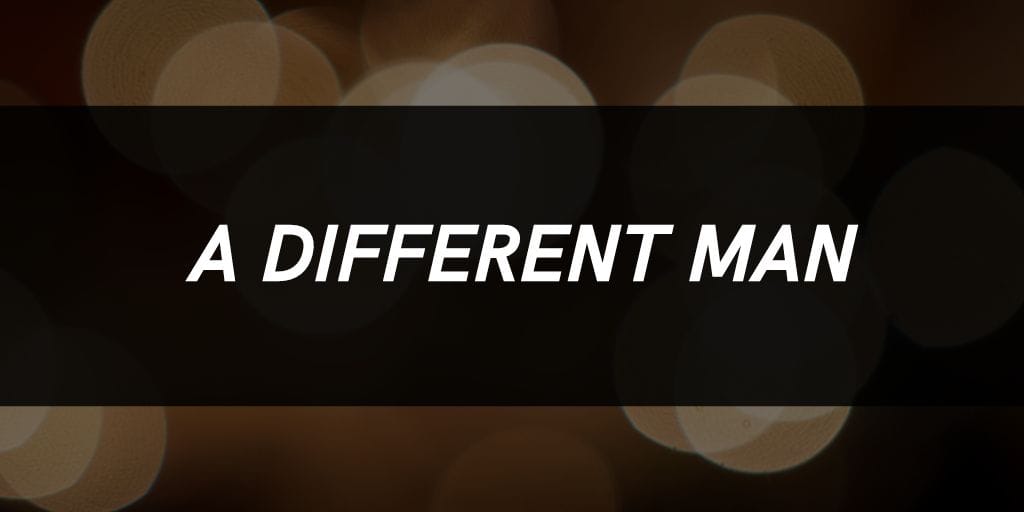
A Different Man, written and directed by Aaron Schimberg
Jacob Krueger: In A Different Man, written and directed by Aaron Schimberg, Sebastian Stan plays Edward, a man with a profound facial difference. For the first half of this movie, (despite some wonderful surprises) his story plays out in many ways as we might expect, if we’ve seen a movie like Mask, for instance…
Having fallen in love with the girl next door, he takes a chance on an experimental, and horrific, new procedure that changes his facial difference, and leaves him looking like… well, Sebastian Stan. Which is supposed to solve all his problems, right?
Except it’s twisted.
In the second half of the movie, Oswald, played by Adam Pearson, a man with almost the exact same facial difference that Edward once had, (both in real life, and in the movie), pops into Edward’s life. And Oswald’s point of view on life is so profoundly different from Edward’s. He feels great about himself, loves his life– and everybody seems to love him!
This character’s appearance starts to reveal the parts of Edward’s problem that have lingered despite his outward transformation– and casting doubt on his previous perception that his problems were all related to his facial difference, the world’s inability to accept him, and the challenges he has had in his life– and leading him to a series of increasingly extreme choices that will reveal the problem that is him, that is in him, that resides in him, that cannot be separated.
There’s the external problem, and then there’s the internal problem.
By confronting Edward with this completely contrasting “reflection” of himself in Oswald, the film pushes both Edward and the audience far deeper into who he really is, and the important issue the movie is wrestling with.
One of the fascinating choices that writer/director Aaron Schimberg made in writing the script for A Different Man was putting his own fears and doubts about how to ethically approach this topic into the structure of the screenplay.
Jacob Krueger: Aaron Schimberg has done another movie, Chained for Life, with Adam Pearson, the actor with the real facial difference who plays Oswald in A Different Man.
He’s decided he wants to make a more commercial movie, which means that he needs a movie star (like Sebastian Stan). But he also wants to include Adam Pearson in the new film.
He realizes that he’s in a really challenging conundrum. If you hire a “beautiful person” like Sebastian Stan to play a person with a facial difference, it can feel exploitative. But if you cast a man with a facial difference to play a man with a facial difference, there’s a thin line there where that can also get exploitative.
So Schimberg decides to do both– to cast both Sebastian and Pearson– and, as he puts it, to just let them “duke it out” on screen. That creates a whole other meta level of this movie, where you’re actually watching the director try to make sense of his own choices.
And it’s done in a very subtle (and also completely wild) way. I’m not going to spoil it by telling you everything, but this one’s been picked up for distribution, so you’ll definitely get a chance to see the movie.
In our conversation about Layla we spoke about revealing character by bumping your main character up against a reflection of themselves– that might seem different– but who are revealed to have the same problems or the same patterns of behavior.
In A Different Man, Aaron Shimberg uses the opposite technique, choosing a character who looks similar (at least to what the main character once looked like) but whose internal world, choices, and patterns of behavior are in stark contrast to those of the main character.
Jacob Krueger: Both techniques have the same result– to force the character to go on a profound journey of change, and to challenge the assumptions, not only of the character, but also of the audience, in relation to an important social issue.
So, as a writer, ask yourself, what would a reflection of your character look like? How would they interact with your character? And how can you move your character on a more profound journey through an interaction with their reflection?
(If you study films and you’ve studied the structural concept of “sea change” with me, then you’re aware that we often get this kind of mirroring around the sea change.)
The other lesson I want you to take from this film, whether you’ve seen it or not, is, if you’re having a problem with yourwriting, see what happens if you put it in the script.
You can go on the meta level. You can also go on the character level.
Let your character embody the problem, and suddenly the problem is no longer a problem. Suddenly you are running at it rather than away from it.
And that can lead to really groundbreaking work like A Different Man.
The next film we’ll be discussing is Reinas, written by Klaudia Reynicke and Diego Vega and directed by Klaudia Reynicke. We were blown away by this beautiful little film, The writing, the direction, the performances, the production design, which managed to drop us so effortlessly into the world of 90s Lima, building that subtly and authentically, rather than through self conscious homages that scream “IT’S THE 90’s!” Everything in this movie just felt real, funny, sad, beautiful. And to a great degree, that’s because no matter how flawed the characters (and they’re all flawed) Klaudia Reynicke’s writing always looks for the love. Like many of the other films we’ve discussed here, Reinas begins with a first image that sets the world for the movie, and for the character. We’re going to be using that image to help you understand how to introduce characters in your own writing, how your first image can help simplify character building, and how to build structure by connecting to the deeper, subconscious emotional needs of your characters.
While we don’t spoil the ending, we can’t discuss emotional needs without giving perceptive writers enough clues to anticipate it, and we do talk about the structure of the main character’s journey, so if you want to wait to see the film, you can forward to our final movie of this podcast, documentary Porcelain War.
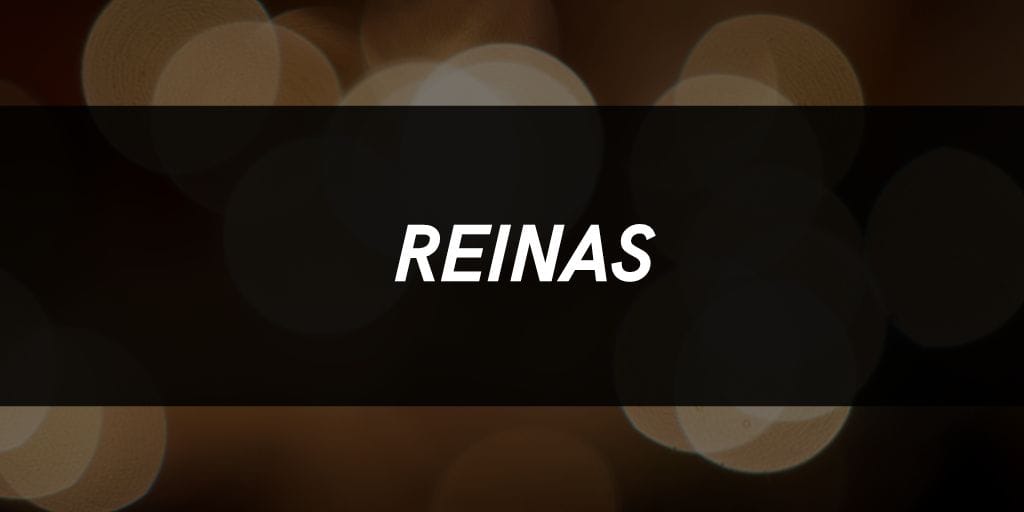
Reinas, written by Klaudia Reynicke and Diego Vega Vidal and directed by Klaudia Reynicke
Jacob Krueger: Reinas is as close to a perfect little movie as I’ve seen in years.
Christian Lybrook: You’re watching it and you don’t even feel time going by.
Jacob Krueger: You’re just dropped into Lima, Peru in the 90s, a terrible time for the people there. You’re dropped into a problematic family that also loves each other. Carlos is a dead beat dad, and the most charming serial liar you’ll ever meet. His ex wife, Elena, has found a way to escape with her daughters to Canada. But to leave the country with them, she needs Carlos’ signature on a legal document. Realizing he’s going to lose his daughters, Carlos, who has been absent in their lives, finally starts to build the relationship with them that they have always wanted…
Christian, I know you want us to talk about emotional needs and the way that they work in this film.
Emotional Needs are the unconscious forces that drive every aspect of your character’s choices, and provide the engine that drives the pursuit of their tangible objectives.
Christian Lybrook: Carlos is somebody estranged from his wife and his two daughters. And while so many of his actions are counterproductive, there’s such a strong sense of his emotional need for love, which rescues a character we otherwise would judge. He’s desperately trying to connect with his daughters. But that emotional need for love shifts by the end, allowing him to shift in a profound way as a character.
Tracking an emotional need is something you have to do intuitively as a writer, because it’s also something that your audience does intuitively. They feel it, even if they don’t realize it consciously.
But the shifts in Carlos’ emotional need are what drives the structure of his story: Love, he gets that. And then that transitions into a new need for safety.
Jacob Krueger: Christian talked about the shift from the need for love to the need for safety that captures the heart of Carlos’ journey in relation to his daughters. I’d add to that another little shift in emotional need.
When we first meet Carlos, he has not yet embarked on his journey to reconnect to his daughters. We haven’t yet reached that “inciting incident.” His primary emotional need when we first meet him is validation.
So we get the shift from validation, to love, to safety… and each of these shifts is connected to and driving the tangible choices Carlos is making. It’s through these emotional shifts that we feel the structure of the character’s change.
Reinas illustrates the importance of the first image, not only to set the tone, but also to introduce the main character.
Jacob Krueger: The two most important moments in any movie are the first image of the film and the first image of your main character. And though Reinas is really an ensemble piece, the story is focused around the father.
We meet the main character, Carlos. He’s driving a taxi, and he’s got some poor guy in the back, and he’s telling a story that’s obviously not true.
According to Carlos, he’s a taxi driver but he’s not “really” a taxi driver. He’s really an actor, and he’s telling this totally apocryphal story. “Do you know who Roger Corman is? OK, good, you don’t. I’m in Roger Corman movies.”
We understand Carlos’ want at this moment… but we feel his need for validation. That’s why he’s telling the story.
And it’s wonderful because this is both the first image of the movie, and the first image of the character. The character is announcing: Hey, this is who I am.
And that’s important not only for artistic reasons but also for commercial ones– even if you’re making a tiny little indie film like Reinas.
Actors get movies made. And great actors get a lot of scripts to choose from. An actor reads a script and they’re deciding from the first moment their character appears, is this a script I should read, or should I move on to the next one? It’s not just about whether it’s a great story. It’s about whether it’s a role they want to play.
That first image of the character in your screenplay is like your first moment at a job interview.
If you walk into a job interview, and the first thing you do is you knock over your coffee on the person interviewing you, it doesn’t matter what you do after that. Even if you are brilliant and they hire you anyway, from every day forward– you’ll be at the company for 15 years and they’ll still be talking about it, “Remember that job interview when you spilled the coffee?”
The same thing is true of your character. The first image gives us a window to completely understand the character. And even if they end up having deeper layers, we’re gonna understand those deeper layers in relation to that first image.
If you introduce your character with a strong first image, that captures who they are, what they want, and what they need, building character becomes so much easier for you as a writer.
Jacob Krueger: Once you know who your character is, once you’ve got that great first image, that great first moment, every time you meet them afterwards, you literally just have to ask, “Well, is he doing something similar? Or is he doing something different?”
Doing that extra little bit of work at the beginning to introduce your character in a way that goes, “Tada! This is me!” makes everything you do from that point forward in your writing easier. Understanding your character’s emotional need, feeling it… I need validation!
And so we meet this character and he needs validation. He’s a deadbeat dad. He hasn’t seen his daughters in years. And his daughters don’t even want to talk to him. They don’t want to be near him.
He wants them to think of him as a good dad. He calls them “reinas,” they’re his queens.
And what is he going to do with them… well it turns out, something similar.
Carlos is going to repeat that pattern of telling this story, another story, and another story, and another story, and another story, all of which are untrue.
What’s beautiful is that, even though he’s repeating the same pattern, his emotional need is changing: from validation to love.
And he gets the love of his daughters. And it’s beautiful. And scary for us… because we understand him better than they do…
Even though he’s repeating the same beat again, and again– he does something the same, the same, the same, the same, the same, the same, the same, the same, the same– his emotional need is shifting underneath, and therefore we can feel the change.
And then we get to the end, and he gets to do something different.
Without spoiling what that is, watching a character go from the same, the same, the same to something different is such a profoundly moving experience.
Remember, need is not something you do in your head; it’s something you do in your heart. You don’t give a character a need. You feel the need that exists inside of them.
With all that said, if you can find a way to see Reinas, see this film. It is as near perfect of a character driven story as you’re going to see on screen.
The final movie we’ll be discussing is the winner of Sundance’s U.S. Documentary Grand Jury Prize, Porcelain War. We entered this documentary about the Ukraine War expecting it to be impossibly depressing, but what we experienced was exactly the opposite, a film that looked at the darkness through the light, that looked at worst horrors through the eyes of artists, that moved us to tears and also to hope. Whether you’re working on a documentary film or a narrative one, Porcelain War, is filled with profound lessons about the power of art, how to build around a central metaphor, and most importantly, how to navigate toward love, even in the darkest possible landscape.
There are some small spoilers, but nothing I would expect to affect your appreciation of the film.
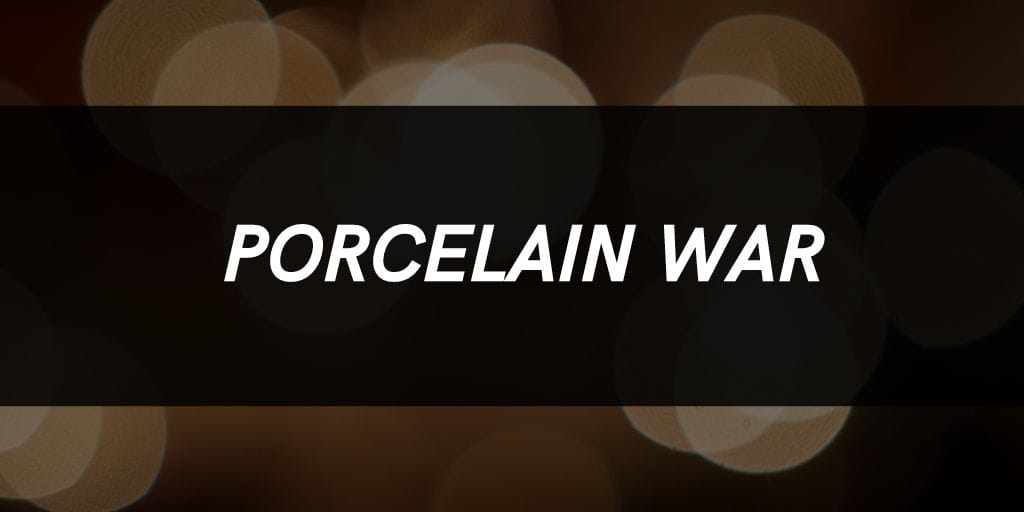
Porcelain War, written by Aniela Sidorska, Brenan Bellomo, Paula DuPré Pesman and Slava Leontyev, directed by Brendan Bellomo and Slava Leontyev
Jacob Krueger: Porcelain War is a Ukrainian war documentary filmed entirely by the people living through it, and told through the perspective of artists, many of whom have been forced to become soldiers.
I just wept through the entire movie.
Yes, it’s about the war, but it’s also about art and the beauty of people in this completely awful situation.
Like all the other movies we’ve discussed, Porcelain War starts with a profound first image that sets the world of the piece. But it uses that image in a slightly different way.
Jacob Krueger: You’re in this beautiful field, watching this couple with their dog running through a gorgeously shot nature scene and you’re hearing this lovely voiceover.
You’re in this idyllic place, and then suddenly there’s a cut and you realize where you are.
You’re seeing the smoke and the destroyed buildings and the broken glass of the war.
As the documentary unfolds, you watch the juxtaposition of the war with this extraordinary porcelain art, which becomes a central metaphor of the piece.
Whether it’s the obscuring mirror of Layla or the porcelain art of Porcelain War, a central metaphor can help form a structural spine for your screenplay.
Jacob Krueger: The art in Porcelain War is inspired by nature and it’s used throughout the documentary in juxtaposition to the horror. And this allows you to feel the striving for the life that could be, or that was, against this absolutely impossible landscape.
It allows you to feel the wrongness of what’s happening all around them. And it focuses your attention on the beauty of people.
Central to the documentary is an image of a porcelain snail, on which is painted a complicated image that represents the beauty of Ukraine– the Ukraine that’s supposed to be. It’s an image that we keep coming back to.
They speak early in the film of porcelain being a material that is both extremely fragile but also indestructible. It can handle intense pressure and intense heat, but it can also easily break.
That becomes a central metaphor for the characters as human beings and for Ukraine itself.
We meet this Ukrainian artist couple, the makers of the snail, who work together on these pieces– and when he’s not making ceramics, he’s training civilians to become soldiers.
Central Metaphors can be developed over the course of your film, just like characters, allowing them to have their own structure.
We’ve seen this with the monster in Your Monster. The facial difference in A Different Man. The obscuring mirror in Thelma. And we’re about to see it in a new way in Porcelain War.
As Porcelain War progresses, the story of the snail progresses visually as well.
We see the image of this snail juxtaposed against these horrific landscapes, against images of civilians, artists, painters, normal people, being trained in weapons of war.
Then there’s this wonderful surprise, when the painting on the snail starts to animate. And you see the story of the war through the animation of this art.
And ultimately the image of this snail is going to become a symbol for the characters’ journeys.
It’s going to become a symbol from their experience of the war, with this unbelievable line:
The snail carries its home on its back. And a refugee is a snail without a shell.
I’m tearing up just thinking about it.
Here are some powerful lessons from Porcelain War, which will be valuable to you whether you’re writing a documentary or a narrative film.
Jacob Krueger: The first is juxtaposition of tone, which is used in a different way here than in the other movies we’ve discussed.
If you’ve seen Saving Private Ryan or All Quiet on the Western Front, these epics that juxtapose beauty and war, it reminds you that your screenwriting– whether you’re making a documentary, a feature, a TV show– doesn’t have to be just one thing.
In fact, the pressure and the emotion comes from the juxtaposition of tone, comes from looking at two things that can’t fit together and trying to make sense of the way they do fit together. So you have great freedom with tone.
The second lesson is related. No matter how dark your subject matter, look for the love.
Because when you look for the love, when you look for the beauty, when you strive for what’s gorgeous, even among the horror– that’s what allows us in the doorway, to care, to be moved, to be transformed, to be changed.
So go see this movie. Even if you can’t see this movie, you can go to porcelainwar.com and give to charities that directly fund the efforts in Ukraine.
But if you get a chance, this movie will rock your world. It will devastate you and it will make you see the true beauty of and the power of art and of beautiful human beings.
Stay tuned for Part 2 of the Lessons from Sundance podcast, in which we’ll be discussing slew of other wonderful films from Sundance, and what you can learn from them, including: Thelma, Blackbox Diaries, Jonathan Nolan’s lecture on screenwriting, Nocturnes, Every Little Thing, Eno (The Brian Eno Documentary) and Kidnapping Inc.
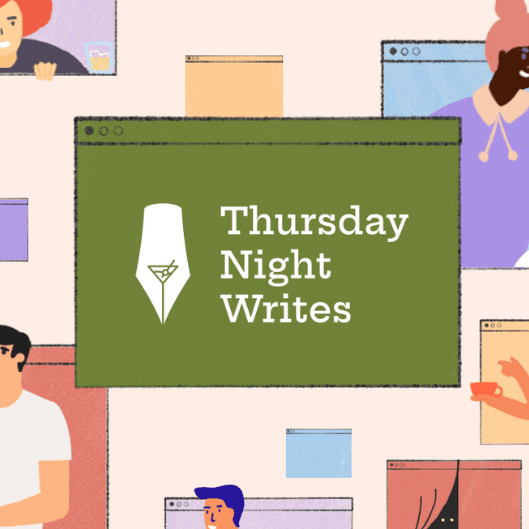
I hope that you enjoyed this podcast. If you are getting a lot out of it and it’s helping your writing, come and study with us. We have a free online class every Thursday night, foundation classes in screenwriting and TV writing, a Master Class for those of you who want a grad school education at the tiniest fraction of the cost, and a a wonderful ProTrack mentorship program that will pair you one on one with a professional writer, who will read every page you write and mentor you through your entire career at less than you would pay for a single semester of grad school.

